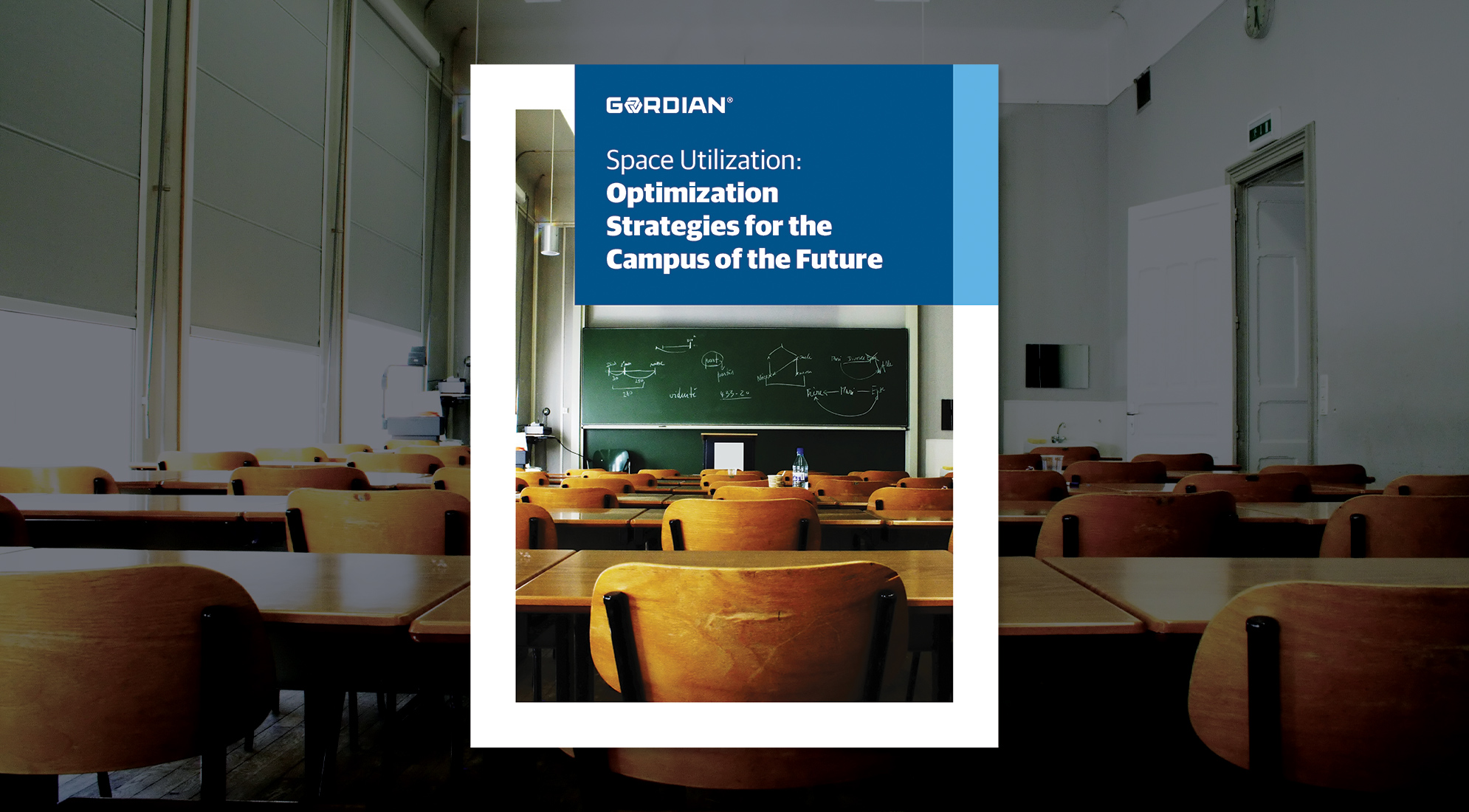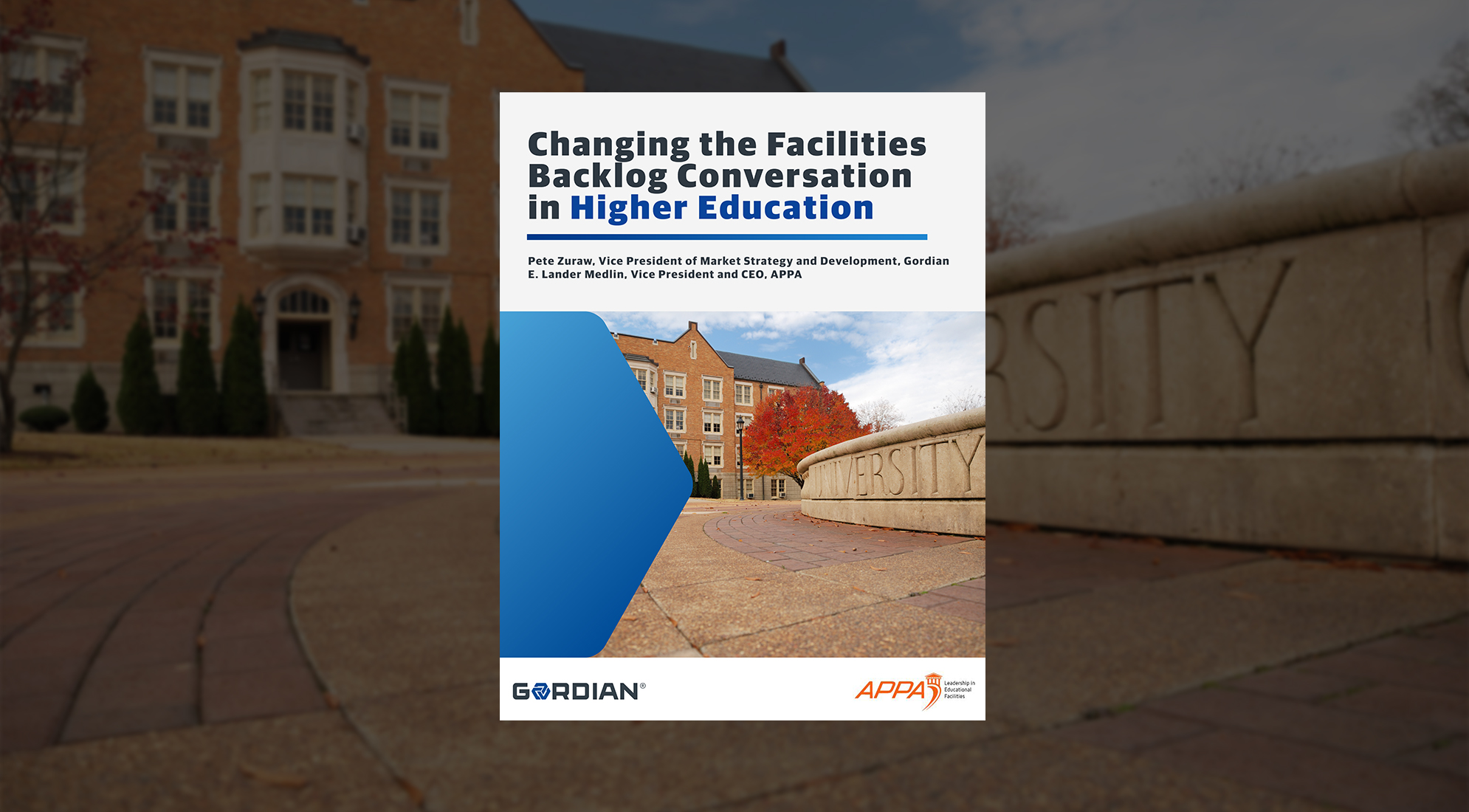In February of 2021, Gordian, in collaboration with APPA, published its annual State of Facilities in Higher Education. The eighth edition of the report focused on the transitioning state of college and university campuses as a result of the financial and enrollment trends existing before the coronavirus pandemic, the impacts of COVID-19, the craters left in its wake and the future of facilities stewardship in a higher education landscape that will never be the same.
The State of Facilities report has generated a wealth of conversation as leaders in the higher ed space grapple with dramatic changes to their long-standing business model and shifting expectations of the college/university experience. In an effort to continue this all-important discussion, Gordian’s Vice President of Market Strategy and Development for Higher Education, Pete Zuraw, and E. Lander Medlin, Vice President and CEO of APPA, are answering a selection of questions we’ve received from industry leaders.
So far, we’ve revisited campus space and considered the organization of tomorrow. In this post, we look at aligning facilities investments with institutional goals.
Q: For the scenario that pandemic is totally contained (hopefully before too long) how will this alter your assessment of campus risks and challenges? – Mohammed A., University of Massachusetts
A: Mohammed, we all hope that the pandemic is under control sooner rather than later. Realistically, our pre-pandemic challenges still remain. There were already risks associated with maintaining insufficiently-funded spaces. There was already a significant facilities backlog. These challenges have been joined by disrupted expectations for how teaching, learning and work might happen in campus communities that have been turned upside down. We encourage people to use the pandemic as both leverage and a learning experience to progress toward addressing latent facilities issues when we realign our schools for the future.
Q: With the need for space drastically decreasing, do you see those capital dollars being redirected to reducing the backlog of deferred maintenance or modernization of campus buildings? – Matthew D., C&W Services
A: Matthew, space represents an opportunity for aligning facilities investments with a portfolio currently needing more work than schools can afford. If schools determine they need less space, they may reduce it. Doing so relieves pressure on existing capital and reduces the gap between available capital and capital required to keep up with the needs of the campus. The dollars available should, but may not, be under close scrutiny as to their deployment in addressing the backlog of capital needs, be it through wholesale modernization, targeted systems projects or the replacement of buildings which have outlived their useful life.
Q: What thoughts do you have for making a case for facility modernization as research is growing, but undergrad enrollment is in decline? – Ernie M., Kansas State University
A: Ernie, revisiting space utilization often leads to an understanding that modernization is the ideal response, particularly for technical facilities that routinely become outdated. Campus modernization can take the form of updates or wholesale replacement, and the driver of that decision is based in the alignment of available resources with institutional programmatic priorities. It is common for replacement to be cheaper, and even simpler logistically if there is space, but there are a host of programmatic and sustainability reasons to stay with an existing structure.
The extent to which modernization involves a “no-net-new space” ethos will continue to grow remains to be seen as the real cost of operating campuses comes into focus. We have a long way to go in creating the healthiest (in all senses of the word) buildings for occupants and often it takes radical rethinking and modernization from existing circumstances to achieve new campus realities.
For insights into the trends that are shifting the higher education landscape and how those trends challenge traditional facilities management strategies, download our free report, “The State of Facilities in Higher Education, 11th Edition.”
Q: Given the current changes due to the pandemic, we seem to be rethinking campus space needs and the functionality of that space as well. As a result, the issue of capital renewal needs may be changing. Is there an analysis of facility needs relative to the value of a space for its educational/research needs rather than just its physical needs? – Ted W., Purdue University
A: Ted, we’re all looking for a way to link the cost of facility needs to the value of a space. But to even begin to address the importance of a space, you must draw the institutional and academic leaders into the conversation. We can count how much space is on a campus and discuss how much space is tied up in research and that can be a measure of how much we need to invest monetarily. But discussions of value are much more challenging.
Determining the value of a space is not a facilities question; it’s a strategic question. Everyone from the Board on down has to decide what an institution’s priorities are and every campus is going to have find its own way on that front. Campus business officers need to take a disciplined look at their facilities needs and decide how they align with institutional goals and mission.
Q: There is a lot of anxiety associated with higher education administration at this point. In your opinion, who holds the key to moving to aligned engagement on priorities and building to a constructive sense of urgency? How can service delivery professionals close enough of these gaps to make a difference in this process? – Tom W., University of Kansas
A: Tom, the collaborative search for consensus can often make it seem like there is no one group assigned to address an issue. But this moment in time represents the best opportunity yet for facilities leaders to continue demonstrating their competence and capabilities for optimizing the use of space, addressing facilities needs and matching them to institutional carrying capacity. We’re in this unique time where we are unburdened by tradition and practice after a year-plus of adopting alternative learning and work practices. That’s our cue to lead.
Facilities stewards must map a path forward because no member of the campus community knows the downstream implications of investment decisions better than facilities leadership. As Joe Bilotta, Director of Campus Planning for the University of Iowa, noted in the Feb 19, 2021 APPA Town Hall, “Facilities professionals can help create new tools and planning metrics or templates along with space and financial impacts as we change the way we do business. We can play a big role by showing options, possibilities and opening minds to the space ramifications based on operational plans and models. Silos are down and people are looking for advice and guidance, so we need to be both assertive and collaborative.”






